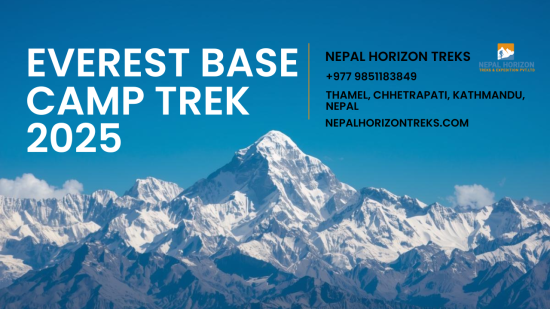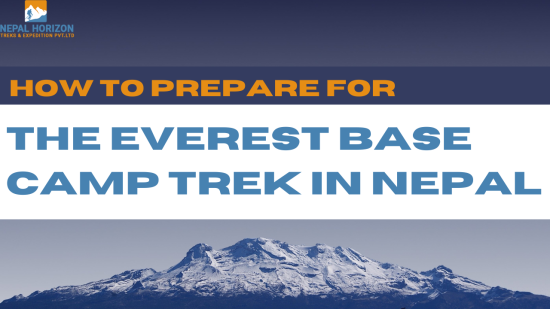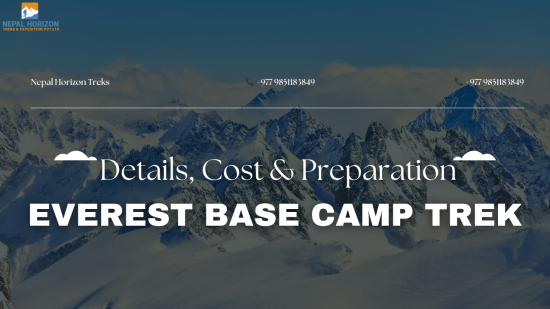Short Annapurna base camp trek
29th January 2023
The Annapurna ranges—Machapuchre, Khangsar, Gangapurna, and Hiunchuli—may all be seen from the walking trails, as can others. You may enjoy the same thrills of a Nepalese Himalayan trek on the short ABC Trek. The Trekking Trail crosses all of the towns of Jhinu Danda (Hot Spring), Chhomrong, and the last settlement village of Sinwa as it follows the Modi River through the lush forest. All other minor settlements, including Bamboo, Doban, Himalayas, Deaurali, MBC, and ABC, are governed by the Annapurna Conservation Area's special management zone. Only ABC Trekkers are accommodated and fed in these towns.
The short trek to Annapurna Base Camp begins with a quick flight from Kathmandu to Pokhara, one of Nepal's most picturesque tourist destinations. Additionally, we take a brief, picturesque drive from Pokhara to Sewai before taking a calm, easy trek through a sparse forest to the New Bridge over Modi Khola. The trail ascends through a well-paved stone stairway to Jhinu Danda after passing the suspension bridge while taking in the tranquil surroundings and a few snow-capped mountains.
Highlight of Annapurna Base Camp Trek
-
Annapurna I (8091m), Annapurna II (7937m), Annapurna South (7219m), Gangapurna (7454m), Tharpu Chuli Peak (5663m), Singu Chuli Peak (6501m), and other peaks too
-
Pokhara
-
Jhinu Danda
-
Poon hill view point
-
Rhododendron forest
-
Different flora and fauna
-
Suspension bridges, waterfall, river, and lakes
Itinerary of Short annapurna base camp trek
Day 01:Pokhara Simrung Drive and Trek to Bhunuwa, aka Lower Sinuwa.
Day 02:Lower Sinuwa to Deaurali crossing Bamboo2335m , Dovan 2505m and Himalaya 2920m.
Day 03:Deaurali to ABC ( Annapurna Base Camp ) via MBC.
Day 04:ABC to Lower Sinwa ( Bhunwa )
Day 05:Lower Sinuwa to Jhinu Danda, Enjoy Natural Hot Spring Pool, Trek to Simrung and drive back to Pokhara
Day 6- Pokhara to Kathmandu
Accommodation of short Annapurna base camp
The accommodation facility provided during the Annapurna base camp trek is really good. The rooms are well managed and well cleaned attached room with a hot shower. The accommodation facilities in low altitudes are good compared to higher altitudes. As Annapurna comes closer the facility of accommodation also decreases. It may also happen that you have to share your room with another tourist.
Teahouses are the most popular spot for guests to take a break while at Annapurna Base Camp since they offer good accommodation and other amenities at an affordable price. The NTNC (National Trust for Nature Conservation), which established some norms for pricing, menu standards, and, most crucially, the constraints for establishing teahouses in specific regions, oversees teahouses, which are frequently developed and run by locals in that region.
Numerous teahouses are located near areas where tourists can get acclimatized and visit the local neighborhoods. In essence, these teahouses provide hardwood beds with straightforward mattresses, pillows, and blankets. They also provide meals in the same area, manage a Bukhari-style stove for heating the space, and create a pleasant ambiance by letting us use their native musical instruments.
Teahouses typically offer two beds, basic furnishings (a chair, table, and cloth hanging), and a shelf in their guest rooms. As you ascend the mountain, these teahouses are built with a single room that can accommodate 7–9 people, which is obviously too tiny and leaves little room for bag shelves.
Best time for Short Annapurna Base Camp trek
Spring (March-May)
The Annapurna Base Camp hike is popular in the spring (March to May) and attracts adventure seekers and mountain lovers from throughout the world.
The weather is moderate, there is little rain during this time of year, and hiking conditions are ideal. At the Annapurna Base Camp, the average daily temperature ranges from 10 to 0°C. The walk is more enjoyable because the lower sections are warmer.
After March, the hiking season begins. Rhododendron blooms, which blossom in shades of red, pink, and white, transform the forests by April.
From mid-March to mid-May, the temperature begins to rise; during this time, the air is cool, the skies are clear, and you can see the most vivid mountain views.
Summer (June - August)
In Nepal, the summer season takes place from June to August, but it falls during the monsoon. The temperature can rise to high levels. However, the trails could be muddy and wet.
Typically, the monsoon season starts at the end of June and lasts into the second week of August. These days, the temperature ranges from 10 to 23 degrees Celsius. The temperatures at night range from 5 to 10 degrees. The mornings are often clear, but clouds begin to gather in the afternoon and vanish at night. During this time of year, a variety of plants bloom, making the valleys appear greener.
Autumn (September - November)
The Annapurna Base Camp hike is ideal in the autumn. This time of year is ideal for trekking because of the moderate temperatures, light winds, and little precipitation.
In the autumn, the sun is brilliant, the skies are clear, and the mountains are beautifully visible. The skies are clear at night, giving you an unobstructed glimpse of the stars.
By early September, the monsoon season will have ended and the weather will be pleasant to warm. In high altitudes, daytime temperatures can get as high as 20 °C. The temperature at night drops to about 5°C. The monsoon-grown greens turn golden or amber, creating an amazing contrast with the clear blue skies. The grains will be ripening in the terraced fields at this time of year. The surroundings are unpolluted, and the lowlands are lush. Dashain and Tihar, the two main Nepali festivals, provide joy to the entire area.
Winter (December - February)
Fewer people choose to hike to Annapurna Base Camp in the winter (December to February) than in the spring or the fall. The cold in the trekking zones thrills a different species of hikers eager for difficulties. At Annapurna Base Camp, it can reach as low as -10°C.
From late December to early February, it gets the coldest. After the end of February, the temperature gradually rises to about -5°C at high altitudes. The sun is shining, and the temperature is comfortable. Even though it's cold, the skies are typically clear, and the mountains look their best when they're covered with snow.
The paths are also less crowded in the winter. Although we do not advise novice hikers to attempt a winter hike to Annapurna Base Camp, more experienced hikers can easily complete the climb.
Short annapurna base camp trek travel insurance
The moderately challenging trip to Annapurna Base Camp carries some risk of high altitude sickness as well as other unforeseen circumstances, such as abrupt climate changes.
The Annapurna Base Camp Trek requires travel insurance. The insurance plan must pay for medical and emergency repatriation, as well as high-altitude helicopter rescue and evacuation costs. Without travel insurance, you can participate in the cultural, day hike, and city tours, but you'll still be responsible for any mishaps or issues that arise. Any loss or damage that may result from unexpected medical emergencies, flight delays or cancellations, monetary emergencies, or legal issues should be covered by your travel insurance policy. The cancellation of the trip or the need for medical attention while on the trip as a result of any pre-existing medical conditions or difficulties is not covered by travel insurance companies.
Traveling in Nepal's Himalayas without having reliable and appropriate travel insurance is not a good idea because doing so could wind up costing you both your health and your finances. While injuries like sprained ankles or even broken bones are likely to occur while trekking, less evident dangers include food poisoning, hypothermia, skin infections, respiratory infections, and acute mountain sickness (AMS). If any of the aforementioned occur to you above 4,500 feet, you may need to abandon your walk and hire a helicopter to fly you down for prompt medical attention.
Short annapurna base camp physical training
This moderate trek is suited for enthusiastic walkers who can log at least 5-7 hours of daily walking while carrying only a small daypack. Walking at higher elevations is more physically taxing than walking at lower altitudes, but if we are in good physical shape, have an upbeat attitude, self-confidence, and strong resolve, we can successfully complete this expedition. It is a good idea to work out and jog daily for a few weeks before the trip to increase our strength and stability. Although prior hiking experience would be advantageous, no technical knowledge is necessary for this tour. Before embarking on the journey, participants with pre-existing medical issues such as heart, lung, and blood illnesses must see their doctor.
Short annapurna base camp wifi and mobile network
Most of the lodges and teahouses along the trip have WiFi access. Most of them provide services without charge; however, others may charge a modest fee (especially in the high elevations). Even if the internet is not as fast as in cities, using social media and sending texts, movies, and images will still be useful.
If not, you can get a SIM card for your phone, buy a data pack, and access the internet whenever you want. It is the most practical method of utilizing the internet because customers can purchase the amount of data they require. In the nearby shops, travelers can purchase SIM cards. The NCELL and Namaste SIM cards from Axiata and Nepal Telecom are used throughout. Both SIM cards operate properly when traveling to the Annapurna region by foot.
Short annapurna base camp visa information
Every single tourist expects that Indian nationals need a visa to enter Nepal. Both on-arrival and prior to arrival visas are available. In the immigration office at Tribhuvan International Airport (TIA), arrival visas are available. You can get a visa from a Nepalese diplomatic mission located in your country to avoid standing in line at the airport.
You need to fill out a form, have a passport that is valid for at least six months, a passport-sized photo, and cash to apply for an arrival visa. For 15 days, 30 days, and 90 days, the cost of an on-arrival visa is $30; for 30 days, $50; and for 90 days, 125. As soon as you arrive at Tribhuvan International Airport, you must pay the visa fee in cash. However, all SAARC nationals—aside from Afghans and Chinese—are granted free visas.
It is required that travelers from Nigeria, Ghana, Zimbabwe, Swaziland, Cameroon, Somalia, Liberia, Ethiopia, Iraq, Palestine, Afghanistan, Syria, and refugees with travel documents obtain visas from the Nepali government's diplomatic offices prior to their arrival.
Short annapurna base camp Permit
Before starting your trek to Annapurna Base Camp, you need two permits one of them are Annapurna Conservation Area permit ( ACAP ) and Trekkers Information Management System ( TIMS).
Annapurna Conservation Area permit ( ACAP )
One of the most well-known permits needed in the entire Annapurna region of Nepal is the Annapurna Conservation Area Permit (ACAP). It doesn't matter how many days this permit is valid for; it is applicable throughout the entire Annapurna region.
This implies that you can travel around the entire Annapurna region for free using a single ACAP permit. A single ACAP permit, however, is for a single person and is valid for just one entrance. This means that your ACAP permits become void if any trekkers descend through the departure point; however, you may still use this permit as long as you are in the Annapurna region.
ACAP permits can be purchased in Pokhara and at the Nepal Tourism Board for 3000 Nepali rupees each (during normal working days). Your travel company, however, can help on your behalf to prevent additional days to secure permissions.
Trekkers' Information Management System permit (TIMS)
Another essential permit for the Annapurna Base Camp Trek is the Trekkers' Information Management System (TIMS) Permit. All of Nepal's trekking regions are covered by this permission, but each region requires a distinct TIMS permit.
Additionally, TIMS permits can only be used once while you are in the trekking region, even if you are joining two or more distinct zones. TIMS permits help in keeping trekkers' records and in emergency situations brought on by unforeseen natural calamities. This list of individual contributions to the government's swift rescue effort.
TIMS permits are available in Kathmandu at the TAAN office or from a licensed trekking company. TIMS permits cost $20 for lone hikers, and $10 for those who apply through a licensed agency.
Packing list for Short Annapurna Base Camp
Clothing
-
Summer hat/ Winter hat
-
Hiking skirt/ hiking trousers
-
Beanie
-
Neckband
-
Light breathable trousers
-
Full sleeve T-shirt or shirt
-
Woollen sweater
-
Socks 2/3 pairs
-
Down jacket
-
Waterproof jackets and pants
-
Hiking boots or sports shoes.
Hiking gear
-
Hiking backpack
-
Bottle
-
Water purification pills
-
Trekking map
-
Trekking pole
-
Compass
-
Sleeping bag
Camping equipment
-
Scissors
-
lighters/matchsticks
-
Rope
Personal equipment
-
Soap
-
Shampoo
-
Tissue paper
-
Toilet paper
-
Towel
-
Hanky
-
Nail cutter
-
Lip Guard
-
Sunscreen
-
Moisturiser
-
Toothbrush
-
Toothpaste
-
Deodorant/perfume
Optional equipment
-
Watch
-
Camera
-
Phone
-
Notebook
-
Selfie stick
Documents
-
Passport size photo
-
Photocopy of passport and passport
-
Visa
-
Permit
-
Citizenship
Medicine and first aid kit
-
Diamox 250mg (altitude sickness)
-
Paracetamol (painkiller)
-
Imodium (diarrhoea)
-
Clotrimazole cream (skin infections)
-
Crocin (fever)
-
Zintac (acidity)
-
Disprin (Headache)
-
Bandages
-
Handiplasts
-
Adhesive Tapes
-
Crocin
-
Dettol
Recent From Blogs

28th October 2025

25th October 2025

24th October 2025

18th October 2025

14th October 2025

12th October 2025

10th October 2025

7th October 2025






